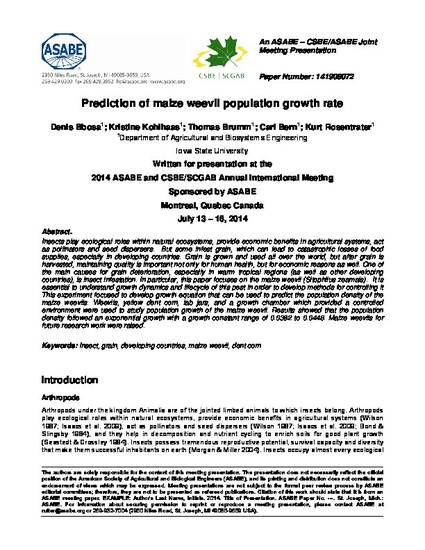
Insects play ecological roles within natural ecosystems, provide economic benefits in agricultural systems, act as pollinators and seed dispersers. But some infest grain, which can lead to catastrophic losses of food supplies, especially in developing countries. Grain is grown and used all over the world, but after grain is harvested, maintaining quality is important not only for human health, but for economic reasons as well. One of the main causes for grain deterioration, especially in warm tropical regions (as well as other developing countries), is insect infestation. In particular, this paper focuses on the maize weevil (Sitophilus zeamais). It is essential to understand growth dynamics and lifecycle of this pest in order to develop methods for controlling it This experiment focused to develop growth equation that can be used to predict the population density of the maize weevils. Weevils, yellow dent corn, lab jars, and a growth chamber which provided a controlled environment were used to study population growth of the maize weevil. Results showed that the population density followed an exponential growth with a growth constant range of 0.0392 to 0.0448. Maize weevils for future research work were raised.
Available at: http://works.bepress.com/cjbern/62/
